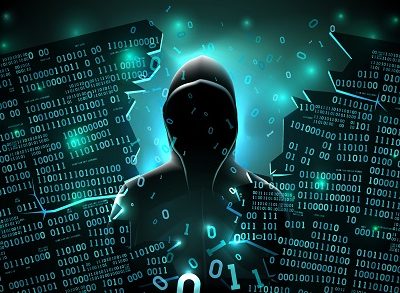DR. JAYKUMAR BHONGALE* MR. OISHIK BHATTACHARYA*
ABSTRACT
A nation’s youth are one of its most valuable resources. The law is a tool for helping youngsters reach their greatest potential. His growth is hampered by youth misbehaviour. So far, the law has responded by using both a carrot and a stick strategy.
While many academic fields strive to comprehend young people and their actions, where neurology offers value.The lawmakers of our country are the products of the same society, a society which feels the criminalization of the juvenile system is the only way forward when dealing with the new breed of super predators. The act which deals with juvenile criminals in our country is the Juvenile Justice (Care and Protection of Children) Act, 2015 (“The Act”). The primary focus of the paper will be on the development of the juvenile brain during their adolescent years and how their psychological and neurological deficiencies mitigate their criminal culpability.The study uses an exploratory approach to examine how Indian constitutional law, legislative standards, and developmental neuroscience treat juvenile justice. The take on the methodical direction of juvenile responsibility and reform is presented in the paper’s conclusion.
INTRODUCTION
A contradiction exists in the way our brain responds to small offenders. Sometimes, the image we conjure of them is that of helpless kids gone wayward. When we hold them in this light, where they are the victims of bad parenting, erroneous peer influences and hapless circumstances, we sympathize with them for their misfortune and immaturity. However, once the crime committed by them is no longer petty and all the sympathy that the society felt for them is consumed, we arrive at the opposite end of the spectrum. The same immature kids become the spawns of Satan with no scope for any improvement,
- Assistant Professor, BharatiVidyapeeth Deemed to be University, New Law College Pune.
- Student of BBA LLB SEM VII, BharatiVidyapeeth Deemed to be University, New Law College Pune.
who are super-predatory1 in nature with the sole aim of corrupting the society with their obnoxious presence. The society then feels no compassion for these kids in this scenario and holds a hardened stance when it comes to dealing with them with respect to their crimes.
Reshaping juvenile justice is a never-ending challenge. Legislations are passed to address issues of justice and to prevent minors from being victimised while being identified as a delinquent. Law reform, is a continual process that responds to the ideals of society as they change. Fixing responsibilities, providing reformation to offenders or delinquents, and providing justice to the victims are the three main goals of the law.2
It is equally crucial for the law to identify the issues and comprehend the threats to societal values. Science and law can work together to a great extent to address the dangerous delinquent behaviour of kids and the subsequent negative influence on his growth and development as well as that of the nation. Research in the two fields should collaborate in order to comprehend a phenomena and develop solutions to the problems it poses.
CONSTITUTIONAL STANCE:
The conventional position is largely taken into account when determining who may be regarded a juvenile, and all of the county’s resources are utilised to design numerous additional principles for the growth and protection of a juvenile. According to the 1989 UN Convention on the Rights of the Child, a “child” is defined as a person who is under the age of 18 unless the age of majority. The grundnorm stance in India may be found in the context of Article 24 of the Indian Constitution, which states that a child under the age of 14 cannot be employed in a dangerous job. Although the legal age of consent in this case is 14 years old.3
The court in “M C Mehta v. Union of India” determined that because construction work is a dangerous job, children under the age of 14 cannot be engaged. Abuse of children while they are still young is forbidden by Article 39(e). Article 39(f)” guarantees the children’s healthy development and protection from exploitation According to Article 39 of the Constitution, it is the responsibility of the state to prevent abuse of children while
1John Dilulio,The Coming of the Super Predators, Washington Examiner,November 27,1995, available at https://www.washingtonexaminer.com/weekly-standard/the-coming-of-the-super-predators (Last visited on October 4, 2019).
2 Cohen, A. O., & Casey, B. J. (2014). Rewiring juvenile justice: the intersection of developmental neuroscience and legal policy.Trends in cognitive sciences,18(2), 63-65.
3 Ford, J. D., Grasso, D. J., Hawke, J., & Chapman, J. F. (2013). Poly-victimization among juvenile justice- involved youths.Child abuse & neglect,37(10), 788-800.https://doi.org/10.1016/j.chiabu.2013.01.005.
they are still very young and to make sure they are not coerced into working in occupations that are inappropriate for their physical development and age.4
The act which deals with juvenile criminals in our country is the Juvenile Justice (Care and Protection of Children) Act, 2015 (“The Act”). It was passed against the backdrop of the horrific Nirbhaya Gang Rape5 case, in which one of the accused was a minor falling short of reaching majority by a few months. The parliament felt that it was its duty to surf on the wave of emotions against antisocial teenagers prevalent in the country at the time, hence they brought in a law which not only violated the very preamble to The Act itself but also the basic tenets of the Constitution of India.6 To add to that, The Act is also in contravention to all international treaties related to childcare and criminal rights that India is a party to.
The Act calls for the formation of a Juvenile Justice Board (“JJB”)7 for the preliminary assessment of the capacity of the children in the age group of 16-18 to commit crimes.8The author will make an effort to convince the reader that adolescent criminal behaviour is a product of both their contacts with society and the steady maturation of their brains during their growth period.
NEUROSCIENCE OF THE ADOLESCENT’SDEVELOPMENTAL BRAIN
The premise that the author wishes to set is that in order to come to correct decisions, the people who work in the juvenile process need to be aware of the changes that a child’s brain goes through during his adolescence9, an age during which a child suffers from risk seeking stimulations projected by the brain itself.10
4 Goldstein, N. E., Serico, J. M., Romaine, C. L. R., Zelechoski, A. D., Kalbeitzer, R., Kemp, K., & Lane, C. (2013). Development of the juvenile justice anger management treatment for girls.Cognitive and behavioralpractice,20(2), 171-188.https://doi.org/10.1016/j.cbpra.2012.06.003.
5Gauri Pillai, ShrikrishnaUpadhyay, Juvenile Maturity and Heinous Crimes: A Re-Look at Juvenile Justice Policy in India, NUJS Law Review, 2017.
6Constitution of India, 1950, Articles 14, 15, 21.
7Juvenile Justice (Care and Protection of Children) Act, 2015, Section 2(10), 4.
8Juvenile Justice (Care and Protection of Children) Act, 2015, Section 15.
9Duncan, So Young and so Untender: Remorseless Children and the Expectations of the Law, Columbia Law Review, 102(6)(2002).
10Juvenile Justice and Adolescent brain, available at http://clbb.mgh.harvard.edu/juvenilejustice/ , (last visited on October 4, 2019).
The study of a child’s brain development will help us say that transferring11 a child into adult criminal system means punishing them for their brain’s incapability of regulating their actions. In line with the set premise is the principle of penal proportionality12, which states that people who are less capable of committing crimes should be given lesser punishments for the same.13
Scientists have come with certain development and conclusively said that a juvenile at the age16 has the ability to answer and think logically which is indistinguishable from a adult perspective14 The first three years of a person’s existence were thought to be crucial for brain development, according to specialists.
Future intelligence and decision-making capacity would be determined by the degree of neural connections formed in the brain at the teenage time.15Over the last few decade neuroscientists have found two key psychology processes, myelination and pruning of neural connections, which continue during adolescence. Myelination is the disposition of a layer of fat tissue around nerve fibers because people are left with far too many neurons following the massive growth that occurs in the brain during the last years of juvenile life and once again just before puberty.16Certain neural connections in the developing brain are used more frequently than others as people learn, develop new talents, and move through life.17 The less-used connections shrivel away over adolescence and into adulthood. Early anatomical investigations shows, different regions of the brain which are mature and completely myelinated and pruned at various periods, some relatively early in life and others over the course of several decades. Both times, it seemed that the
11ibid.
12Laurence Steinberg, February 6, 2015, Sentences Should Acknowledge Juveniles’ Maturity, and Immaturity, TheNew York Times, available at https://www.nytimes.com/roomfordebate/2012/06/05/when-to-punish-a- young-offender-and-when-to-rehabilitate/sentences-should-acknowledge-juveniles-maturity-and-immaturity (last visited on October4, 2019).
13The Hindu, September 6, 2013, Justice and The Juvenile, available at: https://www.thehindu.com/opinion/editorial/justice-and-the-juvenile/article5097614.ece (last visited on October 4, 2019).
14 Macarthur foundation research network on adolescent development and Juvenile justice, less guilty by reason of adolescence 2 (2006),
Http://www.adjj.org/downloads/6093issue_brief_3.pdf [hereinafter macarthur report].
15 P.R. Huttenlocher, synaptic density in human frontal cortex: developmental
Changes and effects of aging, 163 brain res. 195 (1979); p.r.Huttenlocher et al., synaptogenesis In human visual cortex: evidence for synapse elimination during normal development, 33 Neuroscience letters 252 (1982).
16 Paul I. Yakovlev&andré-rochlecours, the myelogenetic cycles of regional Maturation of the brain, in regional development of the brain in early life 3-70 (AlexandreMinkowski ed., 1967).
17 Ruben C. Gur, brain maturation and its relevance to understanding criminal
Culpability of juveniles, 7 current psychiatry reports 292 (2005) (providing a brief review of This topic and its relevance to adolescents); see also staci a. Gruber &deborahyurgelun-todd, Neurobiology and the law: a role in juvenile justice? 3 oh. St. J. Crim. Law 321 (2006).
brain areas in charge of essential bodily functions and sensory perception matured most quickly, but the areas in charge of behavioural restraint and control, risk assessment, decision-making, and emotion seemed to take longer.18 The frontal lobe is where many of these higher level activities are concentrated. Using contemporary MRI methods, the outcomes of both of these processes may be seen.
The conclusion that an adolescent’s brain is typically less myelinated and pruned than an adult’s was shown conclusively shown in the late 1990s by UCLA researchers who proved that these processes persist well into early adulthood.
In one study, UCLA researchers analysed the brain architecture of 10 healthy 12–16- year-olds and 10 healthy 23–30-year-olds using MRI scans. In a different study, researchers obtained MRI scans of healthy people at intervals of four years from 4 to 22 years old.The researchers observed a distinct pattern of linear increases in the volume of white matter detected in front area of the brain but noticed nonlinear changes in the volume of grey matter, despite the fact that there was considerable inter-individual heterogeneity in the participants’ cerebral cortex growth. They observed regional variations in grey matter volume, with an overall tendency toward preadolescent increases and post-adolescent declines.
SCOPE OF NEUROSCIENCE IN JUVENILE POLICY MAKING
Recent advancements in brain research that examine concerns of responsibility and “blameworthiness” of young offenders have a growing influence on juvenile justice laws. Christopher Simmons, an adolescent who was convicted of murder in a case that used neuroscience to support the conviction, was supported by psychologist Laurence Steinberg of the American Psychological Association, who stated that “capabilities relevant to criminal responsibility are still developing when you’re 16 or 17 years old.” An adolescent brain is fueled by unchecked and immature emotions.Any incidentof a crime committed by a teenager who is intellectually superior to his peer is accompanied by the inability of the society to reconcile with the fact that an intelligent child is capable of committing an offence.19Society fails to understand that intelligence has nothing to do with the commission for a crime.
18Id.
19Elizabeth Scott, Thomas Grisso, Marsha Levick, and Laurence Steinberg, Models for Change: System Reforms in Juvenile Justice,(2015)available at http://www.njjn.org/uploads/digital-library/MfC- The_Supreme_Court_and_the_Transformation_of_Juvenile_Sentencing-Sept-2015.pdf,( last visited on October 4, 2019).
A scenario in which the brakes of a person’s car fail and he ends up running over a pedestrian sleeping on the sidewalk will not attract criminal liability because it was beyond his control. An adolescent’s brain has a similar working principle. They lack complete autonomy over their actions because of their brain’s accelerator.
The Juvenile Justice (Care and Protection of Children) Act of 2000 in India set the minimum age of comprehension at 18. Legally speaking, anyone beyond that age might be held entirely accountable for his or her behaviour. However, advances in neuroscience over the last ten years show that brain growth lasts until a person is well into his or her twenties.
What does science have to say about the Indian government’s decision to allow 16 to 18- year-olds to be prosecuted as adults and given adult sentences? Simply said, science does not support the choice.
Multiple researches conducted in the field of juvenile neuroscience have revealed that adolescents are different from adults because of their brain being in its maturation phase.20 The US Supreme Court through a series of landmark judgments has emphasised on the fact that children are different from adults21because of their inability to assess the consequences of their actions.22 Most of the actions undertaken by children are the result of their “transient immaturity”. Thus, it can be conclusively said that adolescents who prima facie appear to have assessed the consequences of their actions can still not be given the same criminal culpability as that imposed on their adult counterparts.
A NEUROSCIENTIFIC VIEWPOINT ON THE PRINCIPLES OF JUVENILE JUSTICE
One method of determining a juvenile’s culpability is through a normal standpoint. Whereas criminology aids in developing a better perspective for reforming sentencing guidelines. Legal branch cannot simply ignore the most current advancement in the field of neurology. Neurological standards can be usefully included into the formation of responsibility, rules and punishment policies, which should be more scientifically oriented. The main focus of neuroscience is on understanding the brain, how it develops, and a variety of related ideas. Understanding juvenile from a neuroscience viewpoint starts with knowledge of which parts of the brain are responsible for what functions, what
20Salil Bali v. Union of India, (2013) 7 SCC 705, Subramanian Swamy v CBI, (2014) 8 SCC 682.
21Roper v Simmons 543 U.S.551 (2005), Graham v Florida 560 U.S. 48(2010) , Miller v Alabama, 132 S.Ct 2455, 2470 (2012)
22Hannah Pickard, Choice, Deliberation, Violence: Mental Capacity and Criminal Responsibility in Personality Disorder, International Journal of Law and Psychiatry, vol.40, (2015).
are the various functions of the brain are, how they work, how old the brain is, and many other different ideas.23
Global advancements in brain research that explore problems of responsibility and blameworthiness of young offenders are increasingly influencing juvenile justice practises. Adolescents and young adults have traditionally offered difficulties for policymakers. Higher occurrences of criminal behaviour, drug use disorders, and the onset of psychopathologies are frequently observed during this vulnerable age. The most significant characteristics include a spike in dangerous behaviours, elevated levels of impulsivity and sensation seeking, increased sensitivity to rewards, and increased response to danger and punishment.When you’re 16 or 17, your criminal responsibility- related capacities are still maturing. When should a teenager be regarded as an adult? Is a subject raised by legal concerns about the age of majority?While it is permissible for minors to be tried in adult courts, their brains are very different from those of typical adults.
Brain Age: The results of the Brain Age study can provide a valuable viewpoint when examining juvenile justice policies. Today’s neuroscience employs a variety of methods to determine the age of the brain, not only by examining its physiological traits but also by examining its functional characteristics. Nowadays, data are collected via fMRI, and the data are then analysed using numerous so-called worldly ideas. It might be difficult to comprehend an adolescent’s growth from a cognitive and emotional standpoint.
The dorsolateral region of the frontal lobe is an element of the cognitive control system. Although it develops more slowly than the social-emotional system, this system gives the social-emotional system control. The limbic midbrain system and the orbital frontal regions, which are both parts of the frontal lobe, are both included in the social-emotional system. It grows much more quickly than the cognitive control system. The social- emotional system particularly regulates the brain’s emotional state. Because of the rapid growth of this system, teens have an increased demand for rewards, greater need for sensation, higher emotional reactivity to both happy and negative emotions, and increased sensitivity to social cues.Through adolescence, the psychological control system develops and functions, which results in: “an increase in the teen’s impulse control; better regulation of the emotional system; detection of options. Age is associated
23 Cohen, A. O., & Casey, B. J. (2014). Rewiring juvenile justice: the intersection of developmental neuroscience and legal policy.Trends in cognitive sciences,18(2), 63-65
with a drop in impulsivity, sensation seeking, peer vulnerability, and problem-solving capacity”.24
CLOSING REMARK
Science and law must work together to advance both fields. Especially while taking decisions regarding issues as sensitive juvenile’s conviction neuroscience should be taking into consideration. Herein after the detailed oriented study, the researchers have reached the point of conclusion and have suggested some of the steps that should be taken into consideration to reduce the juvenile delinquency.
In India the concepts of Fragmented MRI process should start so that it can be used in juvenile cases which would further helps in mapping the brain development of the delinquent. Neuroscience is just not only the department of study of brain but the branch of psychology is also co-existing. Thus a juvenile welfare and rehabilitation fund should be established and placed at the disposal of the JJ Board of the specific location or area to be used by it for the ongoing rehabilitation needs of the juvenile or child in question. This fund should receive at least 25% of the fine money levied by the criminal courts in each location.
Aftercare programmes should be run by voluntary social organisations with the necessary government oversight and assistance in order to create a meaningful and beneficial aftercare programme to help rehabilitate the prisoners by assisting them in obtaining employment in various government and private endeavours.Probation and other community-based programmes should be favoured since they have the ability to guarantee better care and rehabilitation for young people in addition to being cost- effective.
We should work to change our culture so that no child commits a crime. We can all agree that circumstances are the main reason why many young people commit crimes. The researcher believes that, if this issue can be resolved, juvenile justice will, to a large degree, be resolved on its own.The law should be vigorously enforced. The complete Juvenile Justice Act, if honestly executed, can prevent situations like the Delhi gang rape by giving young people who might become criminals prompt assistance. The act itself is not the issue; rather, it is how it is being applied. The need of the hour is to ensure that the act’s existing provisions are executed rather than amending it.
24Cohen, A. O., & Casey, B. J. (2014). Rewiring juvenile justice: the intersection of developmental neuroscience and legal policy.Trends in cognitive sciences, 18(2), 63-65.





